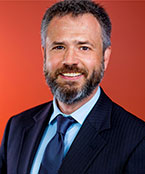Following in the tradition of Connor Barwin and Malcolm Jenkins, former All-Pro wide receiver and current Eagles broadcaster Mike Quick will write weekly for The Citizen this season, analyzing what the Birds will have to do each week on the field to emerge victorious. We’ve paired Quick with Professor Richardson Dilworth, Director of Drexel University’s Center for Public Policy, who will analyze how Philly stacks up off-the-field against the city we play each week. Dilworth, who knows nothing about football, is arguably Quick’s most unlikely teammate ever.
Mike Quick’s On-Field Scouting Report:
When you look at these two teams on paper, the Eagles are better, based on the matchups. The Colts are rebuilding under first-year head coach Frank Reich, the Eagles former offensive coordinator.
The first key for the Eagles is to keep Carson Wentz clean. He’s coming off of nine months of rehabilitation after knee surgery. I looked at Nick Foles’ uniform after last week’s game and it was pretty dirty: He spent a whole lot of time on the ground. Carson’s bodyguards have to keep him from getting knocked down. That’s a big guy—the front line has to enable Carson to ease back in.
The Eagles played sloppy the first couple of weeks, and they’ve got to get back to playing disciplined football. Last week, on the very first play, we have a blown assignment and DeSean Jackson goes 75 yards for a touchdown. There have been too many pre-snap penalties, which are absolutely correctable. You can’t have these type of unforced errors. Teams are too good in this league.
Finally, we talked last week about how X-plays—gains of more than 20 yards—change the complexion of a game. Take away Tampa Bay’s two plays of 75 yards each, and they didn’t do much else offensively. The Colts have a couple of big play receivers who can do that kind of damage. If the Colts are going to score, the Eagles have to make them score on 12 to 14 play drives. Make them earn it, and don’t give up the big, game-changing play.
Prof. Richardson Dilworth’s Off-Field Scouting Report:
Indianapolis is similar to both Tampa and Atlanta in that it is a much less dense  city than Philadelphia: 2,300 people per square mile in Indy, versus 11,400 in Philly. And, just as in Tampa and Atlanta, less density means fewer people biking to work, more people relying on cars, and less public parks.
city than Philadelphia: 2,300 people per square mile in Indy, versus 11,400 in Philly. And, just as in Tampa and Atlanta, less density means fewer people biking to work, more people relying on cars, and less public parks.
There is one important difference: Indianapolis is a Rustbelt city like Philadelphia, yet its density looks similar to Sunbelt cities. There is a specific reason for this: Unigov, which was an ambitious program in the 1960s on behalf of Indianapolis civic leaders to address population loss and disinvestment in the city by consolidating the city with surrounding Marion County. The consolidation was finalized by the Indiana legislature in 1970, and it is generally credited with saving Indianapolis’s economy during the urban crisis years of disinvestment that decimated so many other cities.
Philadelphia is of course also a consolidated city-county, but that consolidation occurred in 1854. During the urban crisis years, Philadelphia did nothing so bold as attempt to expand its boundaries in the way that Indianapolis did with Unigov. So, though I generally speak ill of low-density cities and think higher-density cities are better, I have to give credit to Indianapolis for its ambitious expansion.
However, consolidation was far messier in Indianapolis than in Philadelphia. Yes, we still suffer from the fact that remnants of Philadelphia County exist in the form of the elected “row offices” that probably shouldn’t be elected, but it’s an otherwise pretty cohesive city government. By contrast, the mayor of Indianapolis is simultaneously the mayor of Marion County, yet there are still several independent municipalities in the county that refused to consolidate. Worse, the separate school districts in the county never consolidated—a very obviously purposeful effort to avoid racial integration. Of course, Philadelphia is also highly segregated, as is our school system, so this may be a Pyrrhic victory.
One thing I guess we can feel slightly better about is our lower violent crime rate–even despite the horrors of the opioid epidemic and our higher poverty rate (26 percent versus 21 percent in Indy). Indianapolis is in fact relatively famous for its high crime rate, having made a list of the most violent cities last year—a list we were not on. Also: Indianapolis had a riot in 1995 and we did not. So that’s also good.
Finally, it depends on how you count it, but Philadelphia and Indianapolis typically both end up on lists of the most racially segregated cities in the nation. But consider that Philadelphia is actually geographically smaller than Indianapolis (130 versus 360 square miles) but has nearly twice the population. So while Philly and Indy might be equally as segregated, Indy could actually be considered more segregated, because those segregated populations are actually spatially farther apart.
Combine that with a very different partisan make-up between the cities: Indianapolis more often elects Republican than Democratic mayors, at least since the time of Unigov. One of the chief reasons for riots and higher violent crime rates is a lack of trust between the police and poorer communities. It seems like you have more ingredients for that in Indianapolis than you do in Philadelphia.


